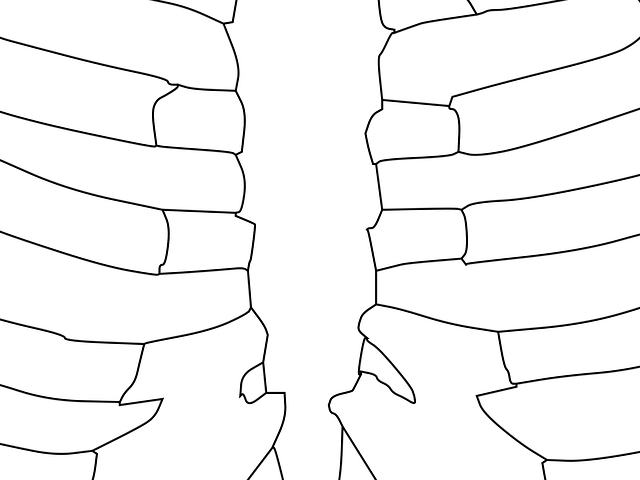Non-invasive pulmonary imaging techniques, including HRCT, MRI, and ultrasonography, offer safe alternatives to traditional methods. Each technique provides unique benefits: HRCT for anatomic detail, MRI for soft tissue changes, and ultrasonography for real-time lung mechanics. This diversity allows healthcare providers to choose the best tool for diagnosing and treating respiratory disorders. Advanced technologies like high-resolution 3D imaging and AI integration further enhance diagnostic accuracy and efficiency in pulmonary care.
Non-invasive imaging techniques have revolutionized the diagnosis of respiratory disorders, offering doctors a detailed glimpse into the lungs without the risks associated with invasive methods. This article delves into the world of pulmonary imaging, exploring various non-invasive tools like X-ray and CT scans, while highlighting advanced modalities such as MRI and ultrasound. We also look ahead to future trends, where technological advancements promise to enhance pulmonary diagnosis even further.
Understanding Non-Invasive Pulmonary Imaging Techniques
Non-invasive pulmonary imaging techniques have revolutionized the way respiratory disorders are diagnosed and monitored. These advanced methods offer a safe and effective alternative to traditional invasive procedures, providing detailed insights into lung structure and function without the risks associated with bronchoscopy or biopsy. By utilizing various technologies such as high-resolution computed tomography (HRCT), magnetic resonance imaging (MRI), and ultrasonography, healthcare professionals can now visualize and assess pulmonary conditions with remarkable accuracy.
Each non-invasive technique brings unique advantages, allowing for comprehensive evaluation of the lungs. For instance, HRCT offers exquisite anatomic detail, enabling the detection of subtle abnormalities in lung parenchyma and vascular structures. MRI, on the other hand, excels in identifying soft tissue changes and airway morphology, while ultrasonography provides real-time information on lung mechanics and can be particularly useful for evaluating pleural effusions or pneumothorax. Understanding these diverse pulmonary imaging methods empowers healthcare providers to choose the most appropriate tool for accurate diagnosis and tailored treatment of respiratory disorders.
X-ray and CT Scans: Common Respiratory Tools
X-ray and CT scans are two widely used non-invasive imaging techniques in the field of pulmonary imaging. X-rays, with their ability to penetrate soft tissues, have been a staple for diagnosing respiratory conditions since their discovery. They provide quick, affordable, and relatively low-risk assessments of the lungs, allowing healthcare professionals to identify issues such as pneumonia, tumors, or fluid buildup.
Computed Tomography (CT) scans offer more detailed cross-sectional images of the pulmonary system. By using X-rays in a rotational manner, CT scanners generate multiple images that are then combined to produce high-resolution 3D models of the lungs. This advanced technology enables doctors to detect subtle abnormalities, track disease progression, and guide procedures like bronchoscopies with greater precision, thereby enhancing diagnostic accuracy and patient outcomes in respiratory disorders.
Advanced Methods: MRI and Ultrasound for Precision
In the realm of pulmonary imaging, advanced non-invasive techniques like Magnetic Resonance Imaging (MRI) and Ultrasound have emerged as game-changers. MRI offers unparalleled detail of lung structures, enabling precise diagnosis of various respiratory disorders. This technique utilizes strong magnetic fields and radio waves to generate detailed images without ionizing radiation, making it a safe option for repeated scans if needed.
Ultrasound, on the other hand, employs high-frequency sound waves to visualize internal organs, including the lungs. It’s particularly useful for dynamic imaging, allowing doctors to observe lung function in real-time. Both MRI and Ultrasound provide valuable insights into pulmonary conditions, contributing to more accurate and effective treatment strategies.
Future Trends: Enhancing Pulmonary Diagnosis
The future of pulmonary imaging looks promising, with advancements in technology paving the way for more accurate and efficient non-invasive diagnosis of respiratory disorders. One exciting trend is the development of high-resolution 3D imaging techniques, such as advanced CT (computer tomography) scans, which can provide detailed insights into lung structures. These technologies enable healthcare professionals to detect early signs of conditions like COPD (chronic obstructive pulmonary disease), emphysema, and even subtle changes in lung architecture due to infection or inflammation.
Additionally, artificial intelligence (AI) is being increasingly integrated into pulmonary imaging, offering potential for automated analysis of complex lung data. AI algorithms can identify patterns and anomalies within images, assisting radiologists in interpreting results faster and more accurately. This not only improves diagnostic efficiency but also reduces the likelihood of human error, ultimately enhancing patient care and outcomes in the management of respiratory disorders.
Non-invasive imaging techniques have significantly advanced the diagnosis and management of respiratory disorders. From traditional X-ray and CT scans to cutting-edge MRI and ultrasound, these tools offer precise and detailed insights into the pulmonary landscape. As we look towards the future, ongoing developments promise to further enhance our ability to navigate and treat respiratory conditions, ensuring better patient outcomes and improved quality of life. By embracing these innovations in pulmonary imaging, healthcare professionals can continue to revolutionize care for those affected by breathing disorders.
